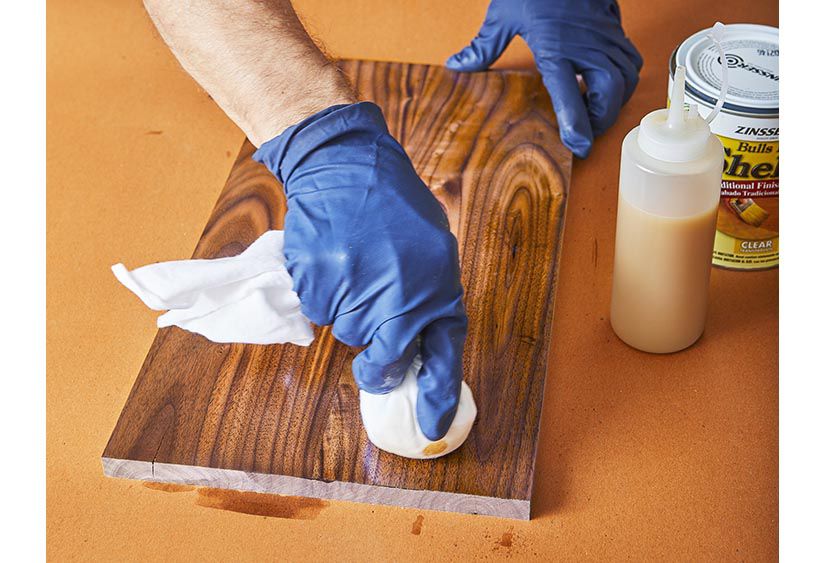Discover why master craftsmen swear by shellac for achieving that perfect, mirror-like finish that stands the test of time. From historic furniture pieces to modern woodworking projects, shellac continues to be the go-to finish for professionals seeking exceptional results.
Understanding Shellac: Nature’s Premium Wood Finish
Shellac is a remarkable natural resin secreted by the female lac bug (Kerria lacca), primarily found in India and Thailand. This extraordinary substance is harvested from tree branches and undergoes a meticulous refinement process before reaching woodworkers’ workshops. The journey from raw ‘sticklac’ to refined shellac flakes involves multiple stages of processing, resulting in various grades suitable for different applications. Premium shellac can cost upwards of £50 per pound in the UK, reflecting its quality and the intensive processing required.
Modern shellac is available in several forms, with dewaxed varieties being particularly popular for their superior clarity and versatility. The natural amber tones of shellac range from pale blonde to deep garnet, offering woodworkers a spectrum of choices to enhance their projects.
Why Choose Shellac for Your Woodwork?
- Natural and Non-Toxic: Unlike many synthetic finishes, shellac is completely natural and safe for use on children’s toys and food-contact surfaces
- Exceptional Sealing Properties: Shellac creates an effective moisture barrier and seals in problematic substances that might interfere with other finishes
- Versatile Application: Can be used as a standalone finish, sanding sealer, or barrier coat under other finishes
- Quick Drying: Typically dries within 30 minutes, allowing for multiple coats in a single day
- Self-Leveling: Natural tendency to flow out and level, reducing brush marks
- Repairable: Unlike polyurethane, shellac can be easily touched up or recoated without stripping
Preparing Your Wood for Shellac Application
Success with shellac begins with proper surface preparation. Start by ensuring your workspace maintains a temperature between 18-24°C (65-75°F) with moderate humidity. Sand the wood progressively through grits, starting at 120 and working up to 220 for most projects. Remove all dust with a tack cloth and ensure the surface is completely clean and dry. For open-grained woods like oak or mahogany, consider using a grain filler before applying shellac.
Application Techniques for Perfect Results
The key to achieving professional results lies in proper mixing and application techniques. Fresh shellac should be mixed using denatured alcohol at a ratio appropriate for your project – typically a 2-pound cut for general use. For best results, mix fresh shellac every few weeks, as it has a limited shelf life once mixed.
- Brush Selection: Use high-quality natural bristle or synthetic brushes specifically designed for shellac
- Application Method: Apply thin coats using long, smooth strokes in the direction of the grain
- Building Coats: Apply 3-4 thin coats, sanding lightly with 320-grit between coats
- Final Finish: Allow 24-48 hours for complete curing before final buffing
Common Challenges and Solutions
Even experienced woodworkers can encounter issues when working with shellac. Here are solutions to common problems:
- Cloudy Finish: Usually caused by moisture – ensure proper temperature and humidity control
- Orange Peel: Too thick application or wrong cut ratio – thin the mixture and apply lighter coats
- Brush Marks: Poor technique or wrong brush – use proper brushing technique and quality tools
- Adhesion Issues: Surface contamination – ensure thorough cleaning and proper surface preparation
Maintaining Your Shellac Finish
Properly maintained shellac finishes can last for decades. Clean surfaces with a slightly damp cloth and avoid harsh chemical cleaners. Inspect annually for wear or damage. For minor scratches, lightly sand the affected area and apply a fresh coat of shellac. For more significant damage, the beauty of shellac lies in its ability to be stripped and renewed without damaging the underlying wood.
Modern Applications and Innovations
While shellac’s traditional uses remain popular, modern innovations have expanded its applications. Contemporary furniture makers combine shellac with other finishes for unique effects, while conservators value its reversibility for antique restoration. Recent developments in shellac processing have improved its shelf life by up to 300%, making it more practical for commercial applications.
Expert Tips for Professional Results
- Always strain freshly mixed shellac through fine mesh to remove impurities
- Work in optimal conditions: 18-24°C with 40-60% relative humidity
- Keep brushes clean by washing in denatured alcohol immediately after use
- Test shellac mixture on scrap wood before applying to your project
- Consider using a spray application for large, flat surfaces
Conclusion: Mastering the Art of Shellac Finishing
Shellac finishing is both an art and a science, requiring patience, skill, and attention to detail. By understanding its properties, preparing surfaces properly, and mastering application techniques, you can achieve professional-quality results that will enhance and protect your woodwork for years to come. Remember that practice makes perfect – start with smaller projects and work your way up to more complex pieces as your confidence grows.
FAQ
Is shellac toxic to the body?
Varnish-like shellac contains methanol (wood alcohol) and is very poisonous.
What is better than shellac?
If you have strong natural nails, shellac is a top option that will be kind to your nails on removal, with a beautiful natural finish. If you’re looking for something that will last for a longer period, say a honeymoon or holiday – go for gel. If you have weak nails, or want some drama – go for acrylics.
What is the downside of shellac?
Shellac creates a strong barrier on the nail surface, which can trap moisture and bacteria underneath. Prolonged use of shellac on toenails, particularly if not applied or removed properly, can increase the risk of fungal or bacterial infections.
Sources
[1] https://en.wikipedia.org/wiki/Shellac
[2] https://www.conservation-design.com/shellac
[3] https://www.webmd.com/vitamins/ai/ingredientmono-90/shellac


Leave a Reply